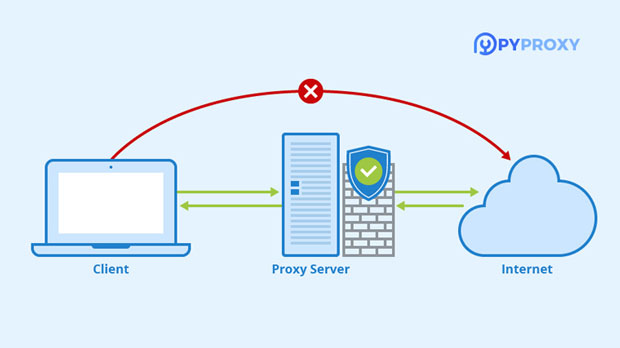Differences in log management between Squid Proxy and Py Proxy in a Socks5 proxy setup
In the context of configuring sock s5 proxies, managing logs is a crucial aspect of maintaining network performance, security, and troubleshooting. Both Squid Proxy and py proxy offer distinct approaches to logging, each with unique features tailored to different user needs. Squid Proxy, known for its robust performance, provides detailed logs that offer deep insights into network activities, while Py Proxy, a lighter solution, offers simpler log management options. Understanding these differences is essential for administrators seeking to optimize their proxy setups, ensuring efficient monitoring and debugging. This article delves into the key distinctions between Squid Proxy and Py Proxy in terms of log management, shedding light on their respective benefits and challenges. Overview of Proxy Log ManagementLog management plays a vital role in the administration of proxies, especially in a Socks5 environment. By capturing essential data such as connection attempts, data transferred, and user activities, logs provide administrators with invaluable information for system monitoring, troubleshooting, and security auditing. In the case of both Squid Proxy and Py Proxy, the logging process is central to their operation. However, the extent of detail, ease of configuration, and the scope of analysis differ between the two, impacting their effectiveness in different operational contexts. Understanding the nuances of these differences helps users select the right proxy solution for their network needs.Squid Proxy: Comprehensive Logging with Advanced CustomizationSquid Proxy is widely recognized for its detailed and extensive logging capabilities, which make it an ideal choice for complex network environments. It provides a wide array of log formats that allow for precise tracking and analysis of user behavior and network traffic.Log Formats and ConfigurationSquid Proxy offers a variety of log formats, including access logs, cache logs, and error logs. These logs are highly customizable, allowing administrators to tailor log output to suit specific needs. For example, administrators can choose to log certain types of requests, filter by user IP, or capture specific types of errors. Additionally, Squid Proxy supports advanced logging configurations, allowing logs to be stored in different locations, managed in real-time, or exported to external systems for deeper analysis.Granular Data CollectionSquid’s logs provide detailed insights into every network request, including HTTP methods, request URLs, user IP addresses, response codes, and transfer times. This granular data makes Squid Proxy particularly effective in scenarios where network performance needs to be carefully monitored, or when security audits are required. Administrators can filter logs based on different criteria to focus on specific network behaviors, such as unusual traffic spikes or unauthorized access attempts.Log Rotation and StorageSquid Proxy also allows for automatic log rotation, which prevents logs from growing too large and ensures efficient data storage management. Log rotation can be scheduled based on file size or time intervals, ensuring that the system does not run out of disk space due to oversized log files. The system also enables archiving older logs for long-term storage and auditing purposes, making it easier to comply with organizational policies and legal requirements.Py Proxy: Simpler and More Lightweight LoggingPy Proxy, in contrast, takes a more straightforward approach to logging. While it provides the essential log entries needed for troubleshooting and performance monitoring, it lacks the extensive customization options available in Squid Proxy. This makes Py Proxy ideal for smaller networks or less complex proxy configurations where detailed logging is not a primary concern.Basic Log Entry TypesPy Proxy typically logs connection attempts, request timestamps, and the status of the connection. These logs are simple and easy to interpret but do not offer the same level of detail as Squid Proxy logs. For example, Py Proxy may log whether a request was successful, the target server, and the amount of data transferred, but it may not include detailed information such as request headers or specific error codes.Simpler ConfigurationOne of the key advantages of Py Proxy’s log management is its simplicity. Configuring logging is relatively straightforward, making it an excellent choice for administrators who do not require extensive log data. There is little to no need for complex custom configurations or advanced filtering. For users who only need basic insights into their network’s traffic, Py Proxy provides an easy-to-use solution with minimal configuration overhead.Log Rotation and StorageWhile Py Proxy may not offer the advanced log rotation features of Squid Proxy, it still provides basic mechanisms to manage log file size. Logs can be rotated manually or based on simple criteria like time or size. However, it does not support the same level of granularity in rotation or long-term storage management as Squid Proxy, which may be a limitation for larger or more active networks.Key Differences in Log ManagementWhile both Squid Proxy and Py Proxy are effective solutions in different contexts, the differences in their log management features are significant.Customization and DetailSquid Proxy stands out for its detailed and customizable logging options. Administrators can define exactly what gets logged, how it is formatted, and where it is stored. This level of flexibility is essential for large organizations with complex network structures. In contrast, Py Proxy’s logging is much simpler, with fewer customization options and a more basic set of log entries.Complexity vs. SimplicitySquid Proxy is suited to more advanced users who require comprehensive monitoring and auditing. Its configuration requires more time and expertise, but the result is a highly detailed and flexible logging system. On the other hand, Py Proxy is designed for simplicity, making it easier for users who do not need intricate log management or who prefer an easier setup process.Use Cases and ScalabilitySquid Proxy is the better choice for large-scale networks or organizations that need detailed logging for performance analysis, security monitoring, or compliance purposes. Its scalability and in-depth log management features make it the preferred solution in such environments. Py Proxy, however, is ideal for smaller setups where log management is less of a priority, or when ease of configuration and lightweight operation are the primary concerns.Conclusion: Choosing the Right Proxy for Your NeedsWhen choosing between Squid Proxy and Py Proxy, the decision ultimately depends on the specific requirements of your network and the level of log management needed. Squid Proxy is the clear choice for organizations that require detailed, customizable logs for comprehensive analysis, security auditing, and troubleshooting. Its extensive configuration options, granular data collection, and robust log rotation features make it ideal for larger, more complex networks. Py Proxy, however, offers a more streamlined and user-friendly approach to logging, making it a great option for smaller setups or users who do not require intricate logging configurations. Its simplicity and ease of use can be a significant advantage when less detailed log management is sufficient for network administration.By carefully evaluating the needs of your network and the capabilities of each proxy solution, you can choose the one that best fits your operational goals, ensuring efficient log management and seamless proxy operation.
2025-03-05

























































